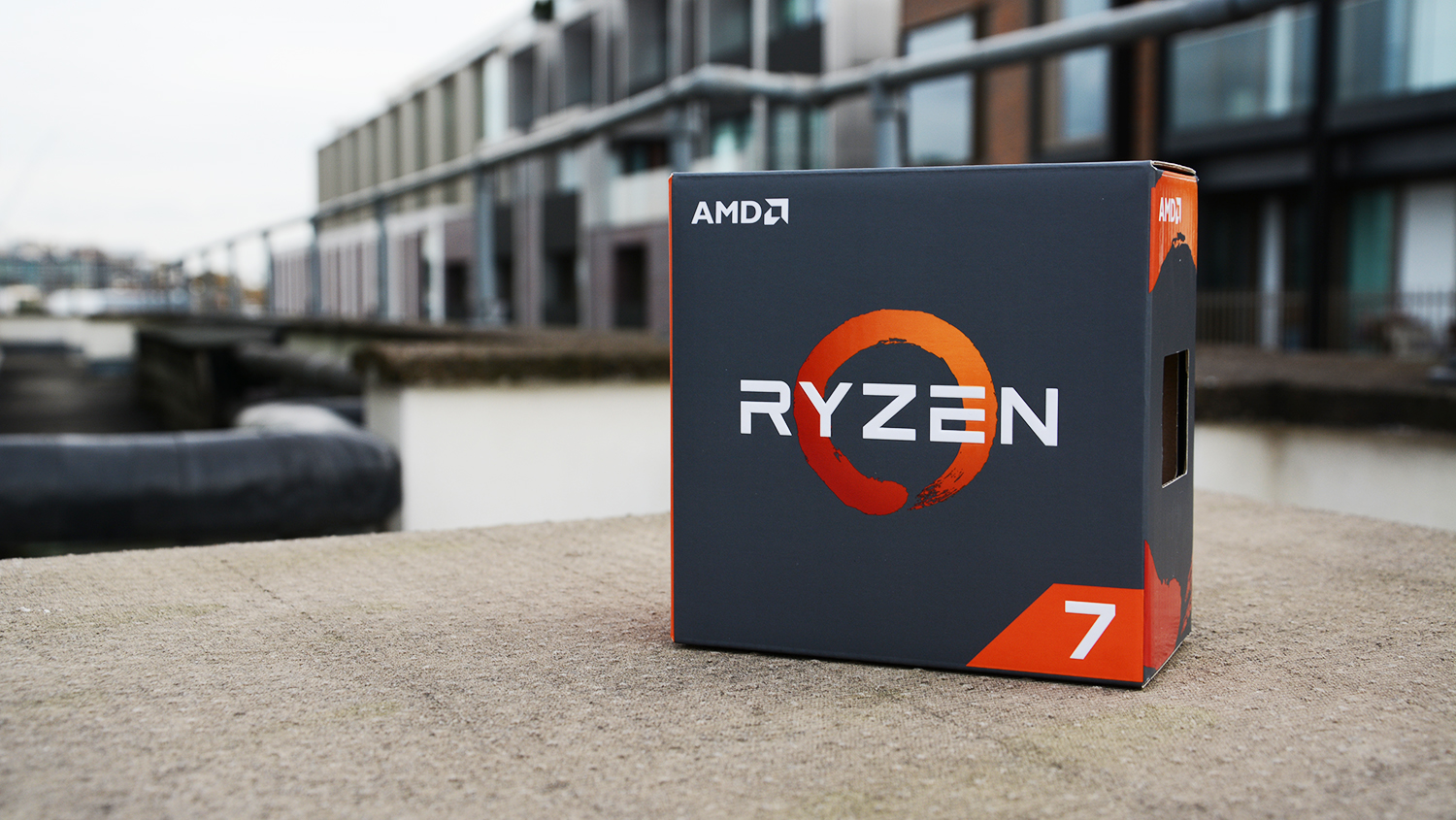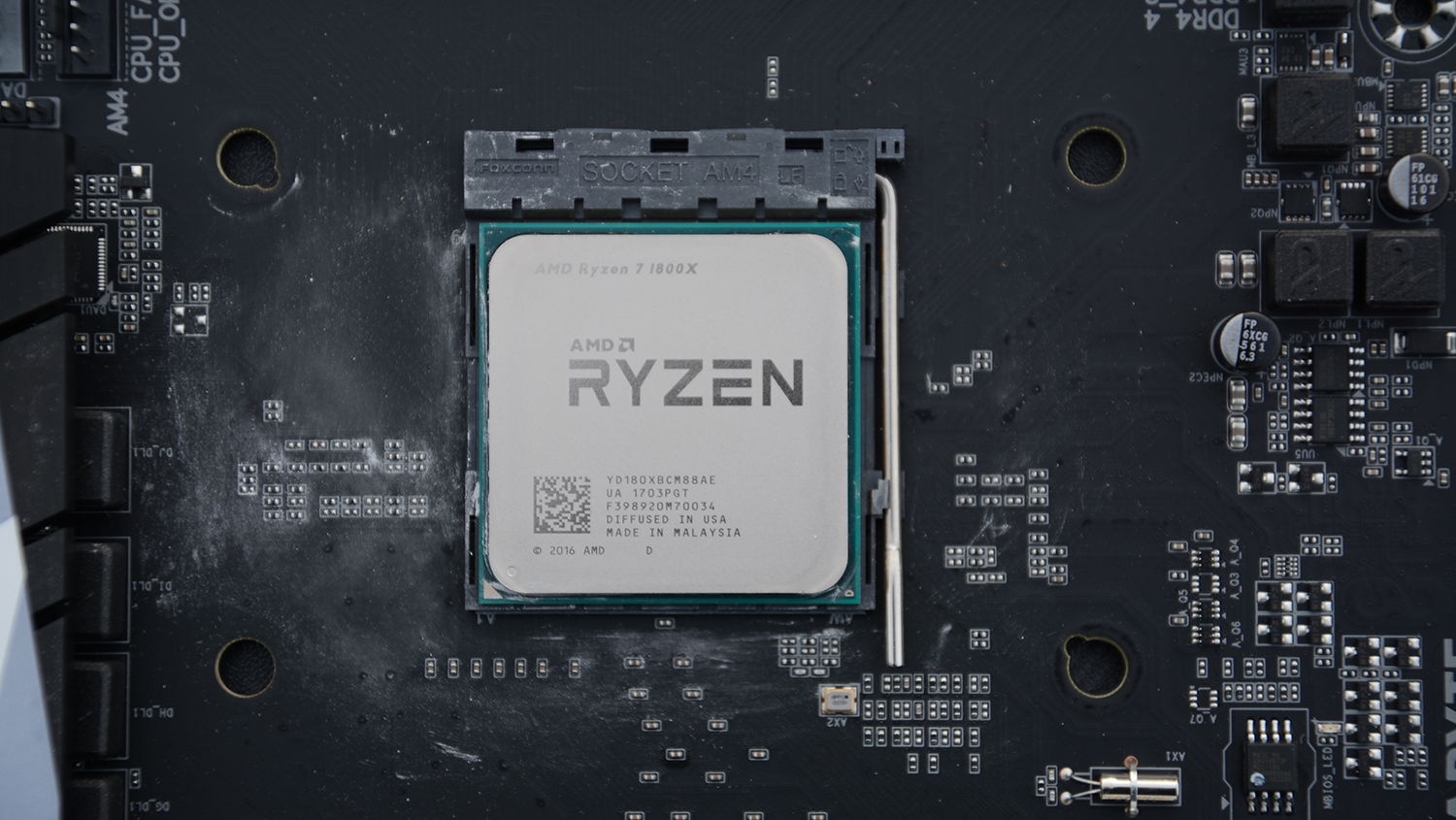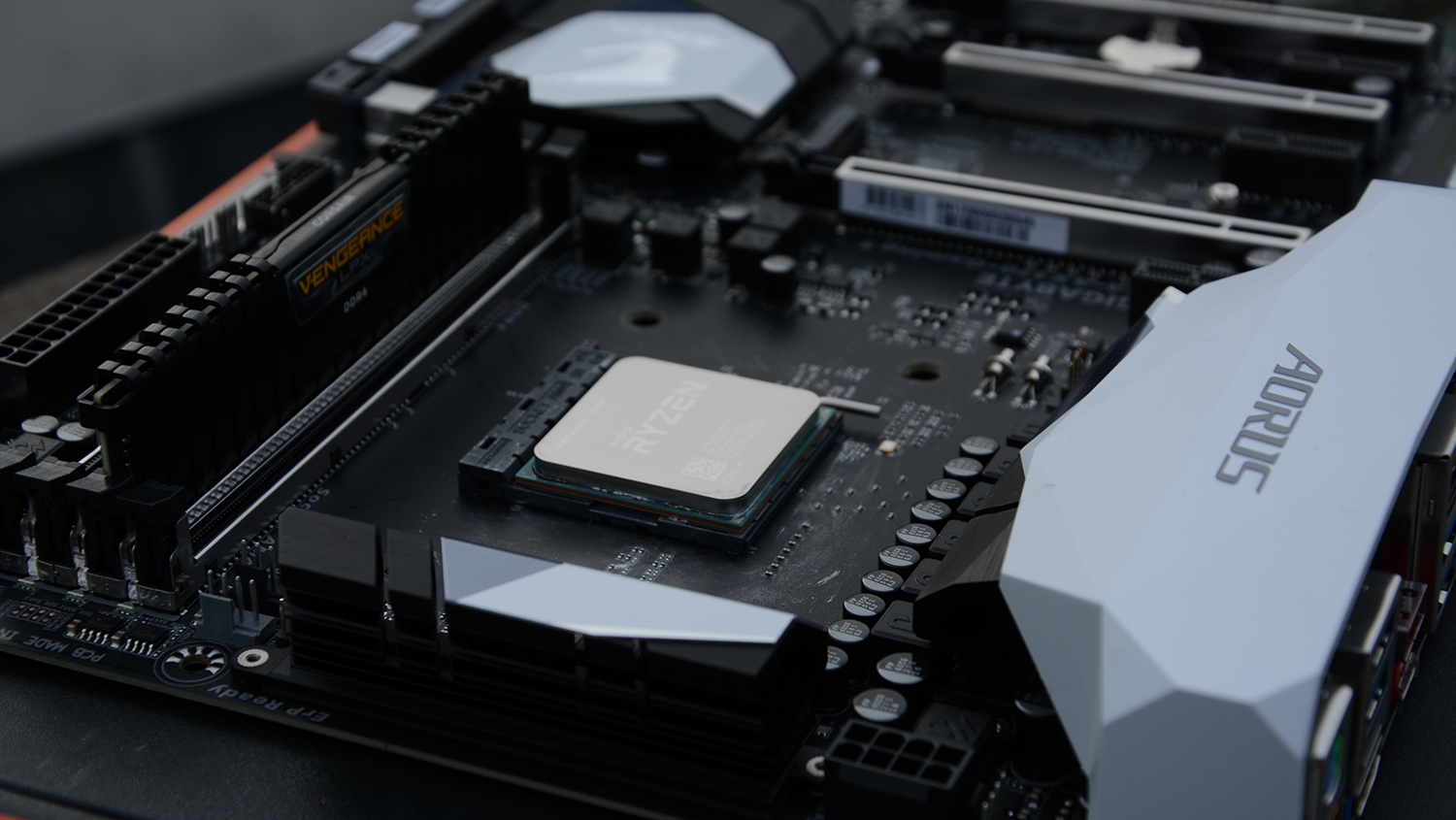AMD Ryzen 7 1800X review: Intel's got competition again
AMD rises from the dead with a multi-core powerhouse


Some weird overclocking behaviour can’t stop this being a brilliant CPU for workstations and enthusiasts
-
+
Outstanding multi-core performance; Great value for money; Impressive thermal efficiency;
-
-
Single-core performance lags behind cheaper Intel chips; No integrated graphics; Won't fit AM3+ motherboards;
It's been four years in the making, but here we have it at last: a family of AMD processors that finally looks like it can stand up to Intel.
Ryzen is a collection of desktop processors based on the much-anticipated Zen microarchitecture. Whereas Intel has been making small tweaks to its recent CPU generations, from Haswell to Broadwell to Skylake and Kaby Lake, Zen is a complete rework of what came before - that means a new 14nm manufacturing process, new die layout, a proper Hyperthreading equivalent (finally) in the form of Simultaneous Multi-Threading (SMT) and, most impressively, a 52% increase in instructions per clock over the old Excavator microarchitecture.
There's certainly a lot of tech backing up this processor, the Ryzen 7 1800X. It's the highest-spec part of the whole lineup, which will - breaking with AMD's previous, slightly muddled product naming conventions - be split into the entry-level Ryzen 3, mid-range Ryzen 5 and high-end Ryzen 7 groups. Ryzen 5 and Ryzen 3, the obvious counterparts to Intel's Core i3 and Core i5 ranges, are yet to be detailed ahead of release later this year, but all three Ryzen 7 chips (which include this 1800X, the 400 Ryzen 7 1700X and the 325 Ryzen 7 1700) are already on the market.
Specs
The 1800X, like its closest siblings, is an octa-core chip - and with SMT tricking your PC into thinking it has an additional eight, that makes for sixteen threads overall. AMD is specifically targeting Intel's thread-heavy Broadwell-E range with this, so the high clock count is sufficiently encouraging - as is the decently high clock speed of 3.6GHz, boostable to 4.0GHz.
More enticing specs come via the new AM4 platform, replacing AM3+. This provides some much-needed modernisations, including dual-channel memory support for DDR4 RAM and expanded 24 PCIe 3.0 lanes. The X370 chipset, also new for Ryzen, adds a further eight PCI 2.0 lanes, allowing for some truly top-of-the-line PC configurations - great news for anyone hoping to stuff their system with multiple GPUs and/or M.2 storage drives.

The downside is that you will, no exceptions, need a new motherboard if you want to upgrade, as AM3+ boards won't fit. Neither will your existing coolers - though many manufacturers will provide an AM4 bracket adaptor, if you can provide proof of purchase.
AMD has also cooked up a couple of ways for Ryzen chips to run as quickly and efficiently as possible, moment-to-moment. Extended Frequency Range (XFR), for starters, can automatically overclock the CPU past its boost clock limit by 100MHz if it's being sufficiently cooled. Precision Boost, meanwhile, increases or decreases clock speeds by 25MHz in millisecond intervals, to ensure that performance and power draw remain balanced.
Sign up today and you will receive a free copy of our Future Focus 2025 report - the leading guidance on AI, cybersecurity and other IT challenges as per 700+ senior executives
It's easy to look at all this and feel worn down by what is, let's be honest, a maelstrom of buzzwords. However, our cynicism quickly evaporated when we completed our 4K benchmarks, because the sum of these features, specs and utilities is - in terms of price versus multi-core performance - possibly the best-value CPU money can buy.
Benchmarks and performance
That being said, let's get single-core out of the way first: it's far from slow, the huge increase in instructions per clock definitely helping, but it's not the reason the 1800X is worth buying. When paired with our test rig's 8GB of RAM and Radeon R7 260X GPU (this, and in fact all Ryzen processors, don't include integrated graphics), it scored 144 in our image editing test. That's just two points higher than the much cheaper Intel Core i7-7700K, from the most recent Kaby Lake generation.

When it comes to heavily multithreaded tasks, conversely, the 1800X is a bargain at 500. It scored 210 in our video editing/encoding test and a hugely impressive 242 in the multitasking portion, for an outstanding overall score of 215.
We haven't benchmarked the Core i7-6900K, the 1,000 Intel chip AMD has been vocal about wanting to take down, but we can say that the 1800X is within throwing distance of an even more powerful Broadwell-E chip, the Core i7-6950X. This achieved an overall score of 245, which makes it sound like the better buy, until you consider that the Core i7-6950K is currently selling for more than 1,600. And it only scored 120 in the image test, showing that Ryzen is not alone in trading off single-core speed for multi-core heft.
This is an incredibly significant achievement - although gamers may be more interested in the 1800X's single-core speeds, it's the multitasking that business users will need. Strong multi-core performance is essential for tasks like video editing, rendering and 3D modelling, as well as being hugely beneficial for speedy day-to-day use while multitasking. For business users, the fact that AMD can offer professional, workstation-grade performance at less than a third of the price of Intel's equivalent chip is sure to be very attractive indeed.
-
 Microsoft Excel is still alive and kicking at 40 – and it's surging in popularity as 82% of finance professionals report ‘emotional attachment’ to the spreadsheet software
Microsoft Excel is still alive and kicking at 40 – and it's surging in popularity as 82% of finance professionals report ‘emotional attachment’ to the spreadsheet softwareNews A recent survey found Gen Z and Millennial finance professionals have a strong “emotional attachment” to Microsoft Excel
By Emma Woollacott Published
-
 LastPass hit with ICO fine after 2022 data breach exposed 1.6 million users – here’s how the incident unfolded
LastPass hit with ICO fine after 2022 data breach exposed 1.6 million users – here’s how the incident unfoldedNews The impact of the LastPass breach was felt by customers as late as December 2024
By Emma Woollacott Published
-
 OpenAI turns to red teamers to prevent malicious ChatGPT use as company warns future models could pose 'high' security risk
OpenAI turns to red teamers to prevent malicious ChatGPT use as company warns future models could pose 'high' security riskNews The ChatGPT maker wants to keep defenders ahead of attackers when it comes to AI security tools
By Nicole Kobie Published